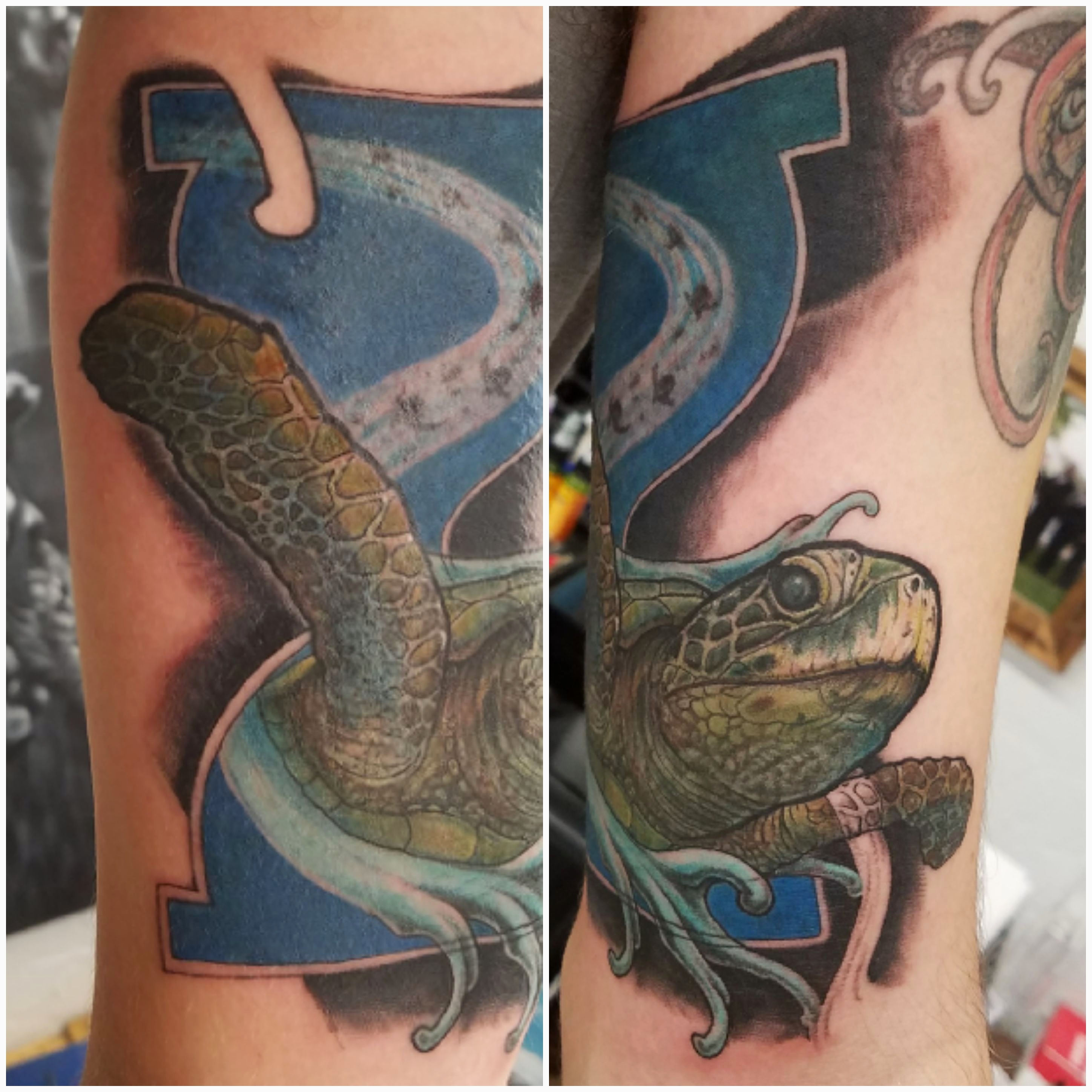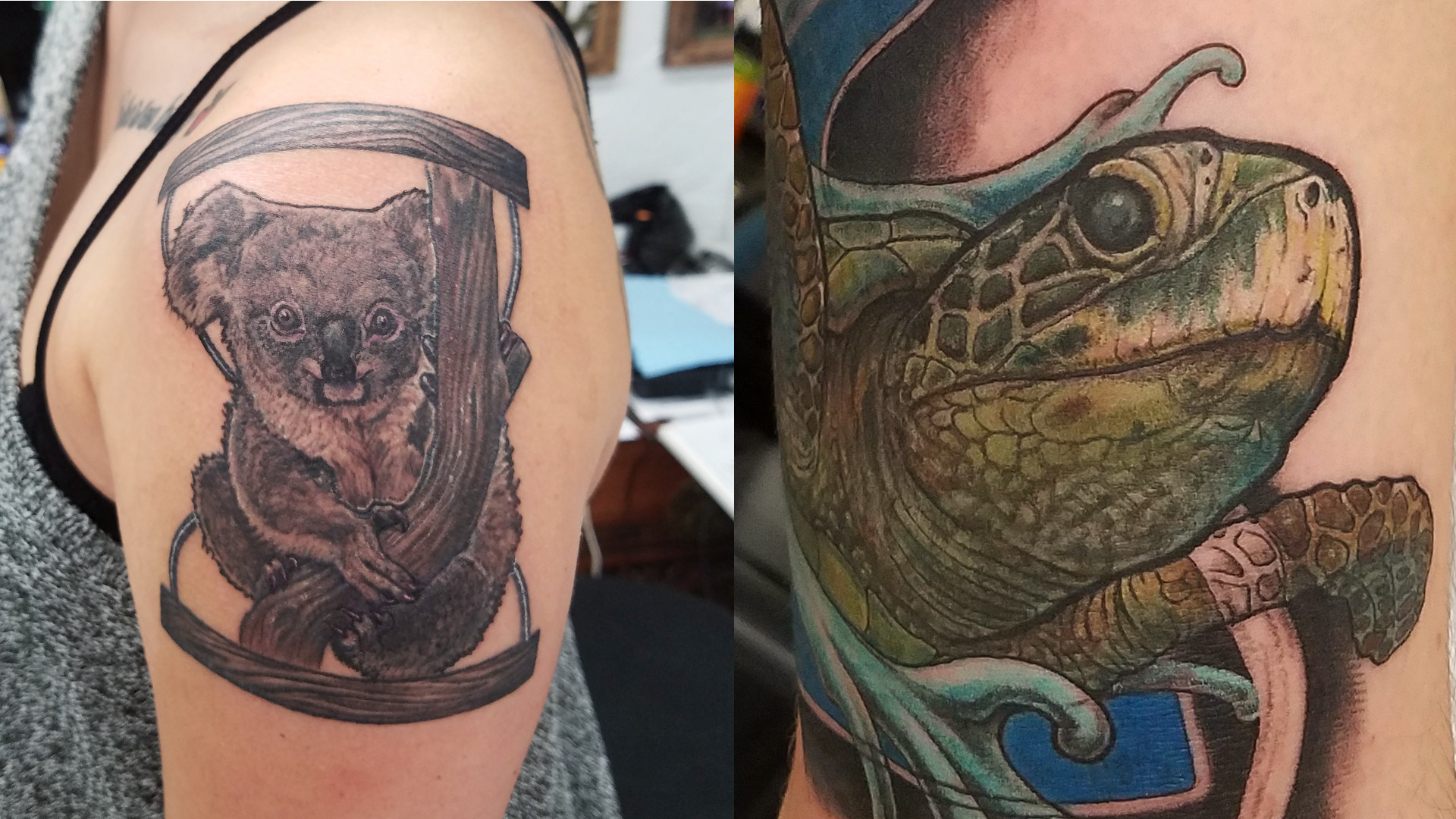“I tattoo,” says artist J. Trip. “That’s what I do.”
A second-generation tattooer, Trip brings something unique to his creations. From his chair at Funhouse Tattoo: International Guesthouse in San Diego, Trip turns his customers’ biceps, shoulders, knees and backs into stunning visualizations of extinct and endangered species.
Trip has been creating the tattoos of what he calls the Holocene Project for a few years now. He sketched out his first creation a few hours after seeing the documentary Racing Extinction. “I’ve always loved nature,” he says. “So when I saw Racing Extinction, it inspired me to do even more research into what we humans are doing to our planet. It also made me decide to figure out more ways to open eyes. The Holocene Project is the culmination of those thought processes.”

Trip’s flesh-and-ink images depict species from all over the planet, but they all bear one common design element. Each tattooed animal is accompanied by the image of an hourglass, counting down the species’ time left on Earth. For some, like the giant panda, the hourglass is mostly full. For others, like the now-extinct western black rhino, the sands of time have run out and the hourglass is left empty.

It’s the hourglasses that often draw Trip’s customers’ attention. “I have a few designs for pieces that I haven’t tattooed yet hanging around my workspace,” he says. “People ask about them and then I get to explain the project.”
Once a customer expresses interest in wearing an endangered species on their body, Trip starts searching for inspirational images. He looks for each species’ most defining traits, thinks about the body part where the tattoo will go, and then goes about designing the art. “I have to think about how to best incorporate the hourglass and the environment, without overpowering either the featured species or the body part,” he says. “By the time the design is correct, I’ve studied every inch and every detail that makes the thing what it is. I’ve imagined why they are as they are, and the function they serve in their worlds.”
As with any good tattoo, the process takes a while, but the resulting images are both stunning works of art and lasting conversation-starters. “By the time I’m done tattooing it, mostly I’m just grateful to the client,” Trip says. “I’m grateful for the person who thought enough of the creature, of my work, and of the project to dedicate a portion of themselves and their bodies. It’s extremely humbling.”
Trip hasn’t kept an exact count, but he figures he’s done a few dozen Holocene Project tattoos at this point. He completed many of them while he and his wife spent a year driving across the country in a renovated van — complete with solar-powered fridge and composting toilet — with more customers finding him since they settled in San Diego, either by coming into his studio or through seeing his Instagram account. “One guy drove all the way from Utah to get a green sea turtle,” Trip says.

Tattooing endangered species is an emotional experience for both artist and client, but Trip says the effort is worth it. “It’s been amazing, and I’m looking forward to what I’m lucky enough to be asked to do next,” he says.



